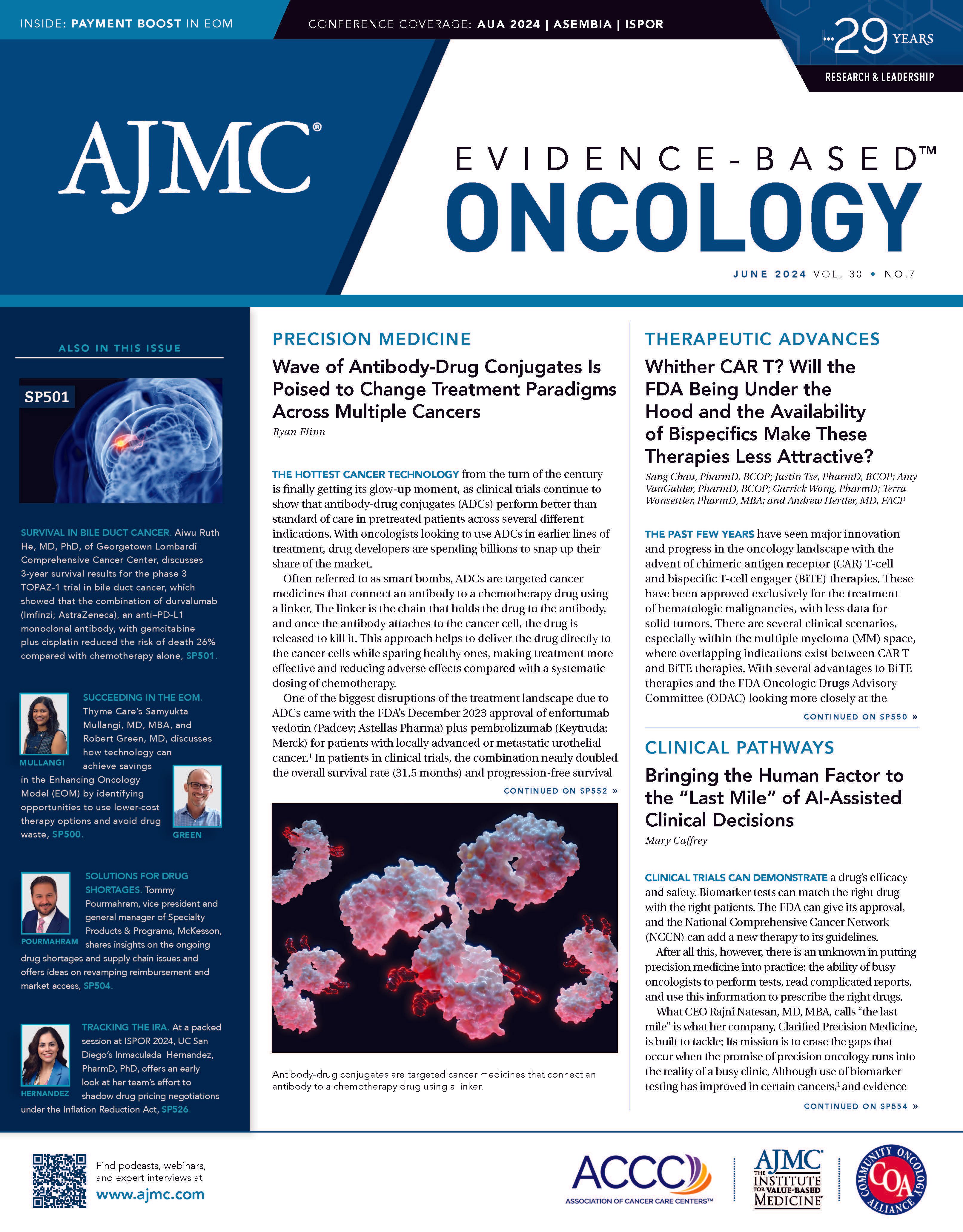Commentary
Article
Evidence-Based Oncology
Collaborative Solutions Are Needed to Address and Mitigate America’s Drug Shortages
Author(s):
Tommy Pourmahram | Image credit: McKesson

Over the past few years, high-profile drug shortages have shined a light on the pharmaceutical supply chain.1 Shortages are not new, and they are caused by many factors. It is worthwhile to understand these root causes and deploy targeted solutions to help ensure an ample drug supply is always available to meet patients’ needs.
Many Factors Are Driving the Shortages
Drug shortages occur when the commercially available supply of a drug does not meet demand. Our view is that most drug shortages fall within 3 key categories: marketwide supply constraints, product-specific issues, and reimbursement and market access limitations. Some causes within these categories include sourcing or manufacturing limitations, natural disasters, market economics, changes in prescribing or patient demand patterns, and product discontinuation.
Ensuring Supply Chain Continuity
In my experience at McKesson, we have found solutions that can be implemented to minimize supply chain disruption, ensuring patients receive the medications they need when they need them.
Collaborating with manufacturing partners. It is extremely important to work closely with other health care stakeholders to optimize inventory levels despite constraints, secure backup products where available, and obtain supply from multiple manufacturers when possible.
STAYING ENGAGED TO BE MORE PROACTIVE. All stakeholders—distributors, providers, manufacturers, consumers, and government representatives—need to work together to improve the system when critical shortages are not happening, becoming proactive rather than reactive.
MAXIMIZING INTELLIGENCE. By deploying artificial intelligence capabilities and predictive analytics, we can attempt to better forecast drug shortages and take proactive steps to address future issues. For example, if an oncology agent appears to be at risk for shortage, we could predict what other oncology products could be at risk because they are alternative treatments and will experience an increase in demand due to shifts. This understanding helps us work with manufacturers and suppliers early in the process to ensure supply availability and prepare for market shifts.
STRENGTHENING ACCESS TO ACTIVE PHARMACEUTICAL INGREDIENTS (APIs) AND FULLY MANUFACTURED PRODUCTS. This requires creating and aligning incentives across the supply chain that go beyond on- or nearshore manufacturing capabilities, which may take significant time to become operational. Now is the time to explore the establishment of incentives to maintain a 3- to 6-month reserve capacity of critical medicines. Manufacturers could be further encouraged to maintain the reserve capacity of APIs and other necessary ingredients for emergency production. That said, for maximum benefit, all efforts need to be coordinated with the Strategic National Stockpile,2 which is the repository of medications and medical supplies managed by HHS, to provide visibility and communication about reserves to ensure adequate supply availability and limit hoarding.
Enhancing the Reimbursement and Market Access Landscape
The government should invest to bolster the market for historically competitive, low-margin drug classes and those that rely on a limited number of manufacturers. In addition, ensuring the quality of medicines is vital to a safe and stable drug supply chain. We encourage incentivizing manufacturers to adopt quality best practices that result in a sustainable and resilient supply chain. The FDA should explore incentives, such as accelerated approvals, vouchers, and enhanced payments for manufacturers demonstrating exceptional quality practices. This idea is currently being evaluated in the form of the Quality Management Maturity program,3 which was established by the FDA’s Center for Drug Evaluation and Research to promote quality management practices that go beyond the requirements of current good manufacturing practices to support a more reliable drug supply chain.
It Is Time to Act
It is time for all stakeholders to work toward collaborative solutions. We at McKesson will continue to play a role in building a resilient supply chain. The suggestions mentioned here may provide some guidance for developing the comprehensive approach needed to ensure patients can continue to access the essential therapies they need.
About the Author
Tommy Pourmahram is vice president and general manager of specialty products and programs for McKesson.
References
1. Drug shortages. FDA. Updated May 16, 2024. Accessed May 18, 2024. https://www.fda.gov/drugs/drug-safety-and-availability/drug-shortages
2. Strategic National Stockpile. HHS. Accessed May 18, 2024. https://aspr.hhs.gov/SNS/Pages/default.aspx
3. CDER Quality Management Maturity. FDA. Updated March 26, 2024. Accessed May 18, 2024. https://www.fda.gov/drugs/pharmaceutical-quality-resources/cder-quality-management-maturity

Newsletter
Stay ahead of policy, cost, and value—subscribe to AJMC for expert insights at the intersection of clinical care and health economics.





